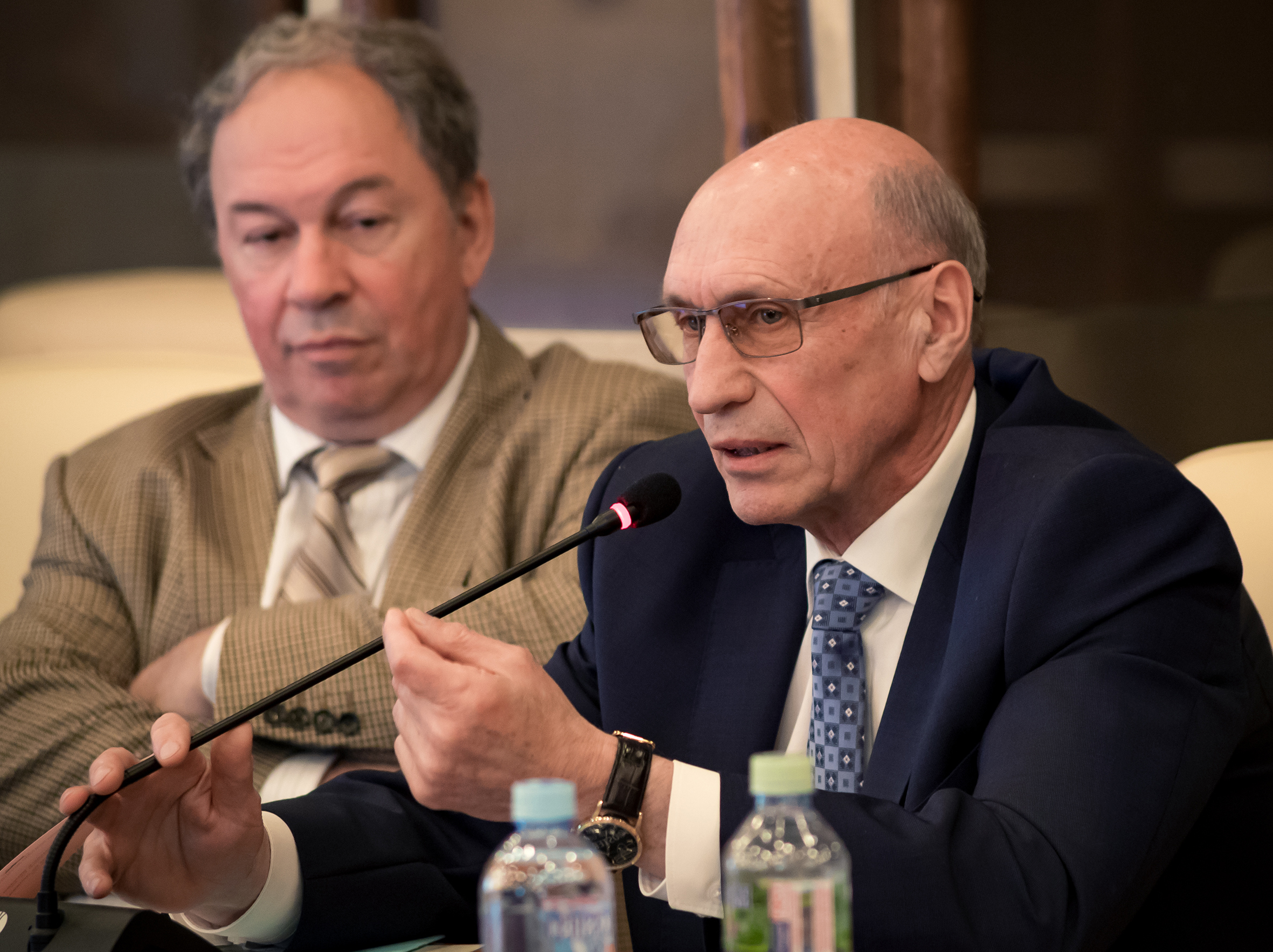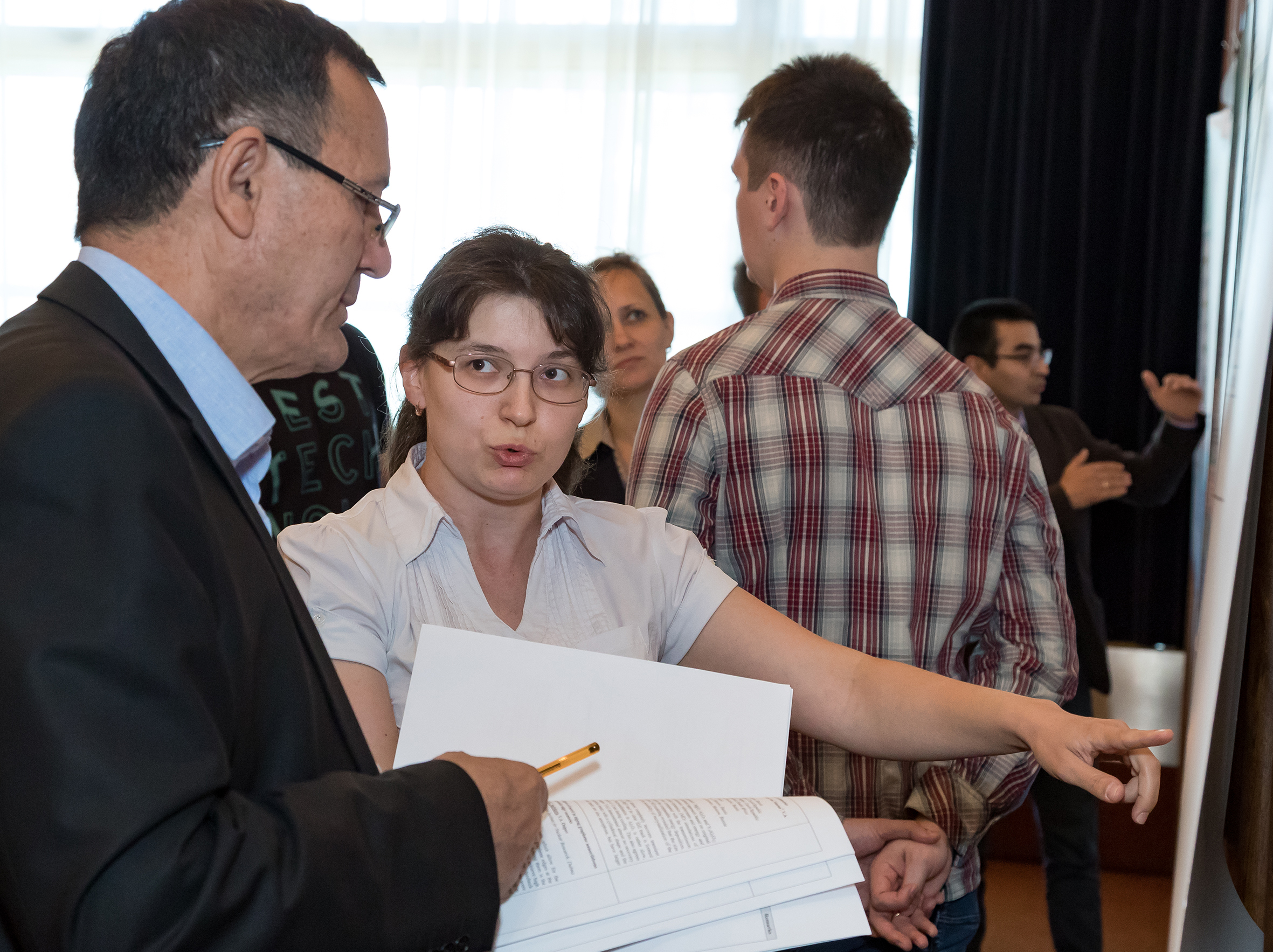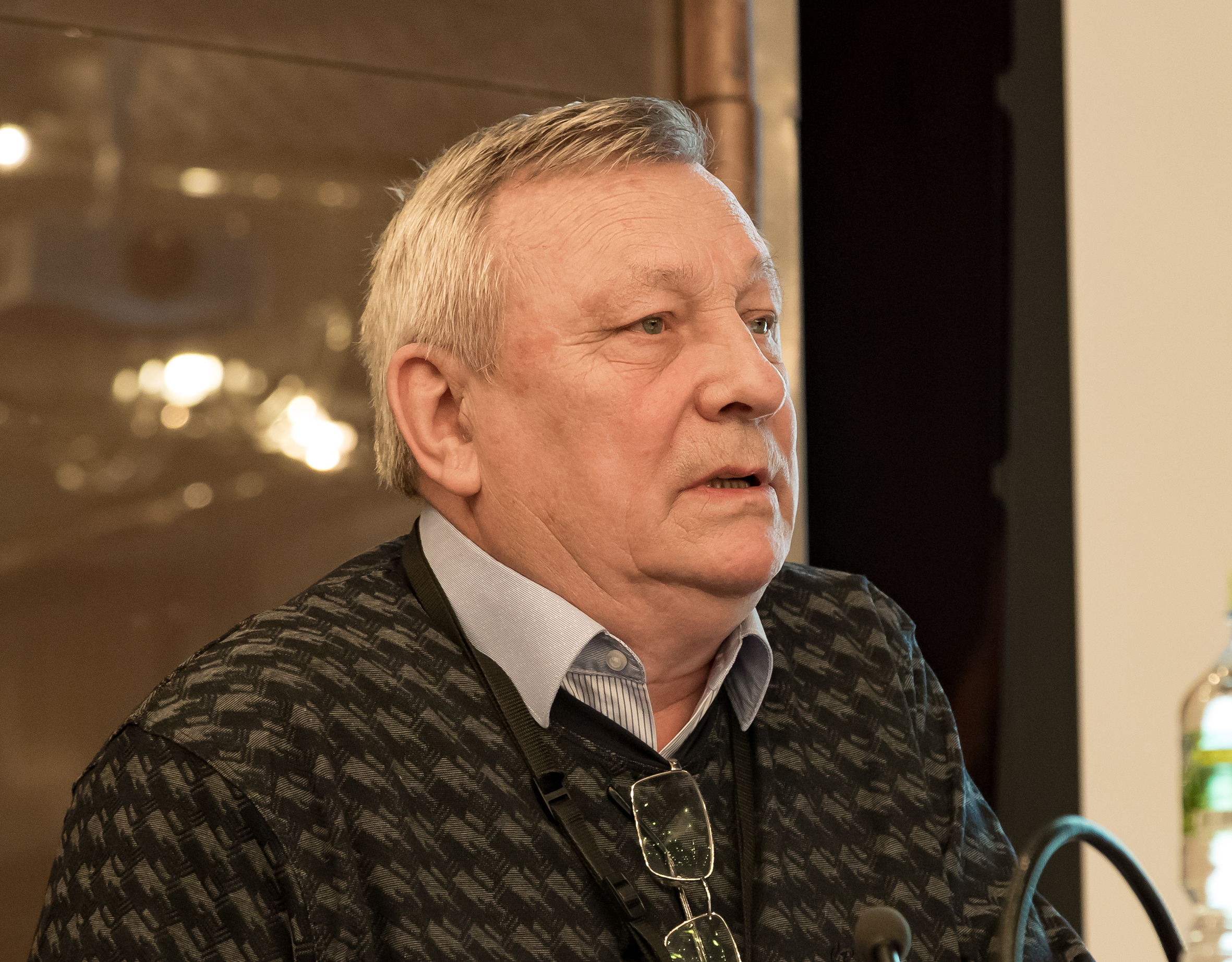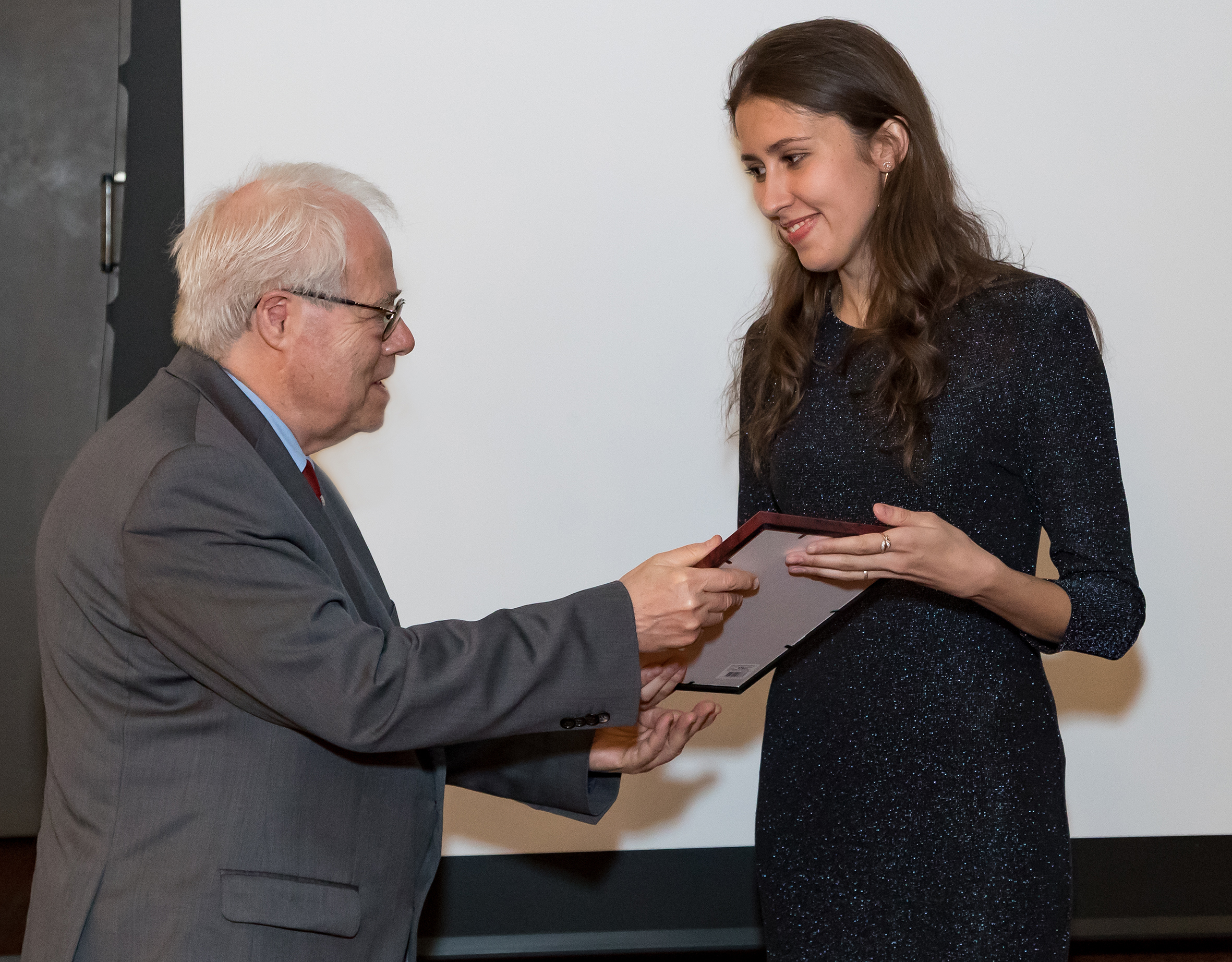New project is awaited
Organization, 22 June 2018
On 14 – 15 June 2018, the 48th meeting of the Programme Advisory Committee for Condensed Matter Physics was held in the JINR International Conference Hall. The first part of the meeting was dedicated to new projects. V.L. Aksenov, Yu.N. Pepelyshev, E.V. Lychagin reported on the projects of a new JINR neutron source, N. Kučerka delivered the report on a new laboratory for structural research at the National Synchrotron Radiation Centre SOLARIS in Kraków, and B.Yu. Sharkov shared information on the development of JINR’s strategic long-range plan. He was the first to answer the questions of journalists.
– At the PAC meeting, the concept of a new neutron source is discussed, it will replace the IBR-2, – Boris Yurievich noted. – The IBR-2 is a brilliant facility, but it has a limited service life, and after 2032, we will have to obtain a new neutron source. A vivid discussion began on what this new source should be like. We heard two reports. The first one was devoted to the concept of the source based on the use of a powerful linear accelerator and the propagating assembly, it is a truly promising kind of source that presupposes new technologies, including the superconducting linear accelerator we have not got yet. The second report was dedicated to new physics that can be made at a new neutron source with the unique parameters. Tomorrow, at the meeting of the working subgroup, we will discuss parameters of the source and physics for it. A special international working group has been established that is engaged in the strategy of the Institute’s development, while the subgroup is engaged in a new source and new neutron physics. The strategy of the Institute’s development comprises all this, and I see that the discussion is professional, it is deep and employs the staff and specialists who are working at a new neutron source as well as physicists who use these neutrons. I am just happy that development of this JINR strategy is a crucially significant task, the JINR Directorate attaches much importance to it. I like that there is passion around this issue, people contribute their talent, leading experts from both JINR and the JINR Member States, partners from the Academy of Sciences are invited. This discussion attracts the best strengths and shows that the Institute has a brilliant future.
– Maybe, I will repeat myself, but I think it would be useful, – FLNP Scientific Leader V.L. Aksenov highlighted. – What is our problem? I do not consider the world problem with neutron sources, our problem is concrete: our magnificent IBR-2 will end its life in 2032 – 2037 depending on the operating mode. Time needed for design, development and construction of such large-scale facilities is not less than 20 years, that is why we have started to solve this task three years ago. In 2015, different options for achieving the highest parameters we do not have today were considered. Moreover, there is a significant ideological issue: science should advance technologies while technologies advance science. If we set challenging tasks, then these tasks should advance technologies.
Such an option is now developed, it was called “The NEPTUN superbooster”, and it meets the needs of the present time with a view to the future, 20 – 30 years further. The first stage, so-called conceptual research, has been finished. It has lasted for three years, and after finishing this work, we published a report on the conceptual development. Nowadays, we are turning to another stage; we have already signed an agreement with the Dollezhal Research and Design Institute for Power Engineering, the Institute that designed all our reactors. It is our old reliable partner the staff of which knows our reactors, and it is very important. I like the new project because it is basically the idea of Blokhintsev, he implemented it in Dubna by the first pulse reactor. However, the new project is brought to a new level with the potential for 20 years. It all looks very nice: new materials, new ideas are used, and RDIPE’s participation is significant.
Read the full article in the JINR Weekly newspaper
Photos by Elena Puzynina, JINR Scientific Information Department







